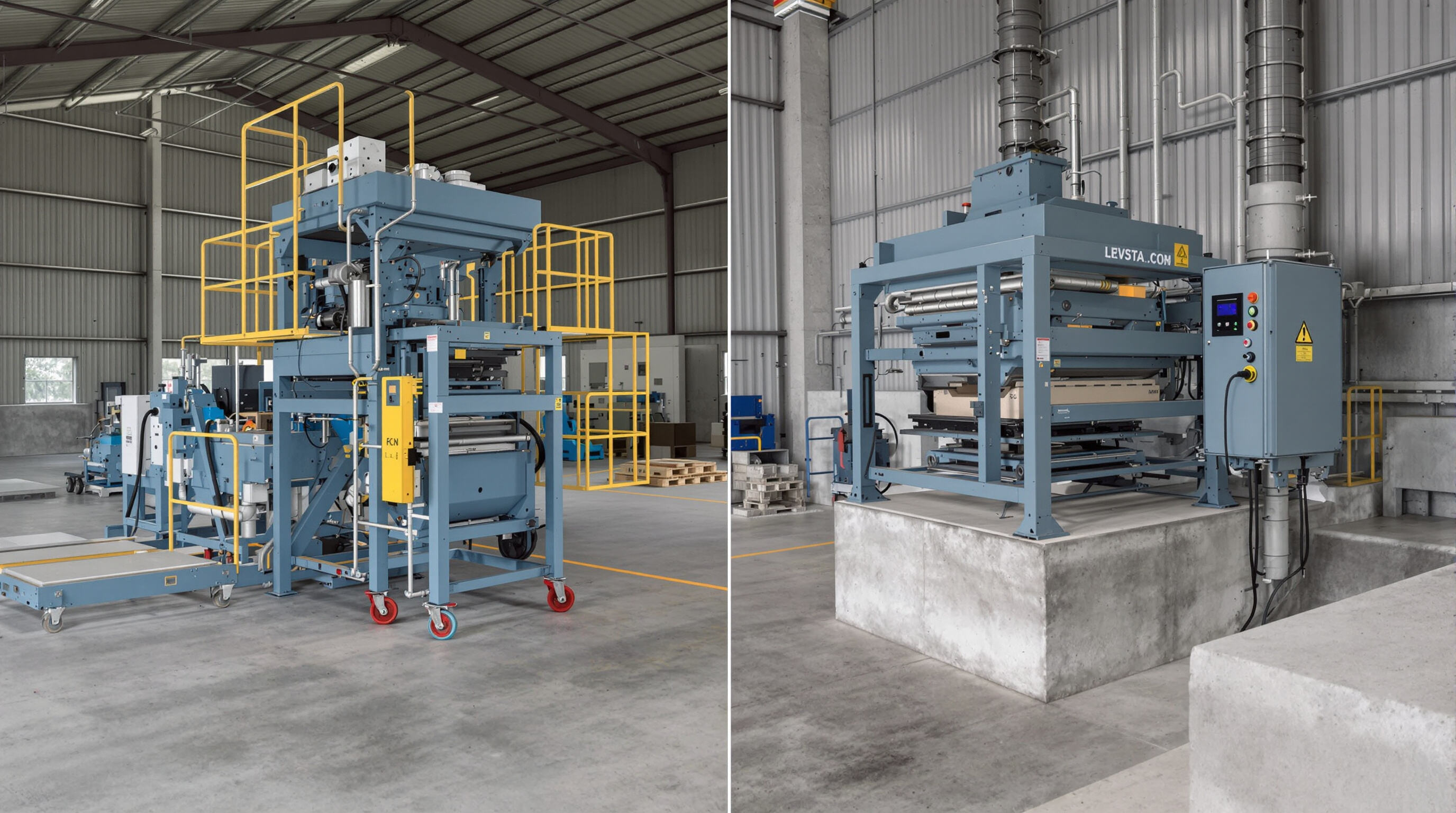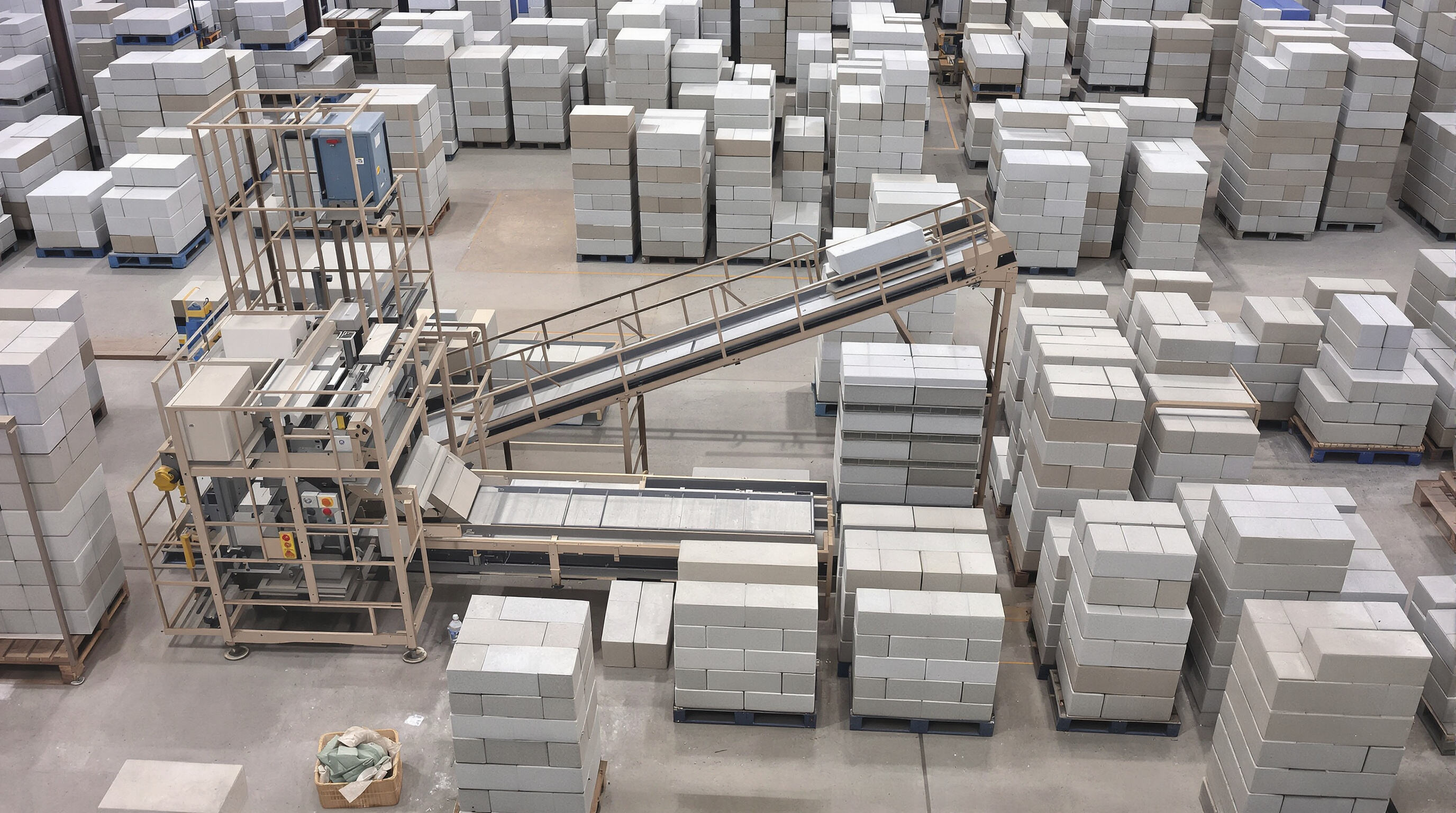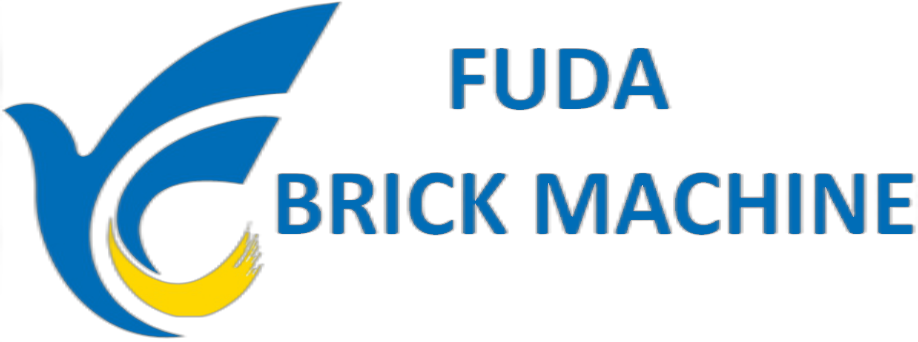Гар утасны болон суурин блок үйлдвэрлэх төхөөрөмжийн хоорондох гол ялгаа

Загвар ба шилжилт: Үндсэн ялгаа
Хөдөлгөөнт бетон блок үйлдвэрлэгч машиныг ихэвчлэн уях эсвэл трактор дээр бэхлэсэн байдаг тул нэг байрнаас нөгөөд шилжихэд хүмүүс тэдгээрийг бүрхэхгүйгээр шилжүүлдэг. Эдгээр төхөөрөмжүүд нь ихэвчлэн 1-5 тонн жинтэй байдаг бөгөөд стандарт нэг фазын цахилгаан эрчим хүч ашигладаг тул талбайн хязгаарлалт байх эсвэл төсөл дуусах хүртэл тоног төхөөрөмжийг олон удаа шилжүүлэх шаардлагатай үед сайн сонголт болдог. Нөгөө талаар, суурин бетон блок үйлдвэрлэгчид нь 800-оос 1700 квадрат фут хүртэлх талбайг хамарсан бетон суурь шаарддаг бөгөөд гурван фазын цахилгаан хангамжийн хүчинг хэрэглэдэг бөгөөд 8 тонноос илүү жинтэй байдаг. Эдгээр шаардлагуудын улмаас тэдгээрийг зөвхөн байнгын үйлдвэрлэлийн газруудад урт хугацаанд суурилуулахад тохиромжтой боловч түр зуурын барилгын талбайд тохирохгүй юм.
Суурилуулах шаардлага ба талбайн уян хатан байдал
Огцомт хөдөлгөөнгүй төхөөрөмжүүдийг бэлтгэхэд гурван долоо хоногоос таван долоо хоног хүртэл хугацаа зарцуулдаг учраас эдгээр нь зөв хөрс бэхжүүлэх, мэргэжилтнүүдийн хийж өгсөн бүх цахилгаан холболтын ажлуудыг шаарддаг. Хамаарангаар нь зөөврийн төхөөрөмжүүд нь талбайд ирснээс хойш ойролцоогоор хоёр хоногийн дотор бүтээгдэхүүн үйлдвэрлэж эхэлдэг. Энэ онны эхээр хэвлэгдсэн сүүлийн үеийн аж үйлдвэрийн судалгаагаар хамгийн олон хөдөл стратегийн төслүүд нь хөрс байгуулалт барьж хийхэд 15,000-30,000 долларын зардал гаргахын оронд эдгээр зөөврийн сонголтуудыг сонгож байна. Энэ нь юу гэсэн үг вэ? Үйлдвэрлэлийн хурд нь энгийн бэхлэгдсэн системүүдтэй харьцуулахад ойролцоогоор 15-ээс 20 хувь хүртэл буурдаг боловч ихэнх ажиллуулагчид энэ нь зардлыг хэмнэх боломжийг олгодог тул энэ түвшинг хүлээн зөвшөөрдөг.
Хэрэглээний тохиолдол: Зөөврийн болон хөдөлгөөнгүй төхөөрөмжийг хэзээ сонгох вэ?
Зөөврийн блок хийх төхөөрөмжийг дараах тохиолдолд сонгоно уу:
- Төслүүд нь олон талбайг хамарна (жишээ нь: 50 миль урттай замын засвар хийх үед)
- Төсөв нь 100,000 доллар доор байгаа (зөөврийн төхөөрөмжийн үнэ 2,500–10,000 доллар, хөдөлгөөнгүй төхөөрөмжийн үнэ 15,000–50,000 доллар болон түүнээс дээш)
- Өдөрт хийх шаардлагатай гаралтын хэмжээ нь 100–4,000 блок хооронд байгаа
Стационар загварууд нь дараах тохиолдолд илүү тохиромжтой:
- Өдөрт 5,000–12,000 блок шаарддаг том төслүүд
- Тусгайлан олон улсын бүсийн зориулалттай цогцолборууд
- Роботын паллетчилэлтийг багтаасан дэвшилтэт автоматжуулалт шаарддаг үйл ажиллагаанууд
Үйлдвэрлэлийн чадавхи ба масштаблах чадварын харьцуулалт

Гаралтын хурд: Зөөврийн болон стационар машины харьцуулалт
Стационар блок үйлдвэрлэгч машинууд 800–1,200 нэгж/цаг зөөврийн машинаас арай их бөгөөд, зөөврийн машины гаралт нь 300–500 нэгж/цаг (2023 оны барилгын тоног төхөөрөмжийн шинжилгээ). Энэ давуу тал нь тогтвортой цахилгаан хангамж, их хэмжээний материал тээвэрлэх боломжийг олгодог тасралтгүй ажиллагаагаар тайлбарлагдана. Газар шилжих боломжтой төхөөрөмжүүд нь түгээлтийн хэмжээг багасгаж, талбайн тохируулгыг хангаж өгдөг бөгөөд төвлөрөөгүй үйлдвэрлэл шаарддаг төслүүдэд зориулагддаг.
| Фактор | Газар шилжих боломжтой машины төхөөрөмж | Зогсоо машины төхөөрөмж |
|---|---|---|
| Тохиромжтой төслин хэмжээ | Бага/Дунд (50,000-с илүү нэгж) | Их (100,000-с илүү нэгж) |
| Үргэлжлэх хугацаа | <2 цаг | 7–14 өдөр |
| Шилжих чадвар | Өдөр тутмын | Байхгүй |
Төслийн хугацаа болон ажлын урсгал дээрх нөлөөлөл
Газар шилжих боломжтой төхөөрөмжүүд нь анхны бэлтгэлийн ажлыг багасгадаг 60–75% тогтмол суурилуулсан төхөөрөмжүүдтэй харьцуулахад (2022 оны Их, дунд, жижиг байгууллагын үр ашгийн тайлан). Гүйцэтгэгчид мэдээлэж байна 15–20% хурдан төслийн эхлэл үүнийгээс шалтгаалан суурийн болон цахилгаан холболтыг хийх шаардлагагүй болсон. Гэвч ажиллагаа эхлэсний дараа тогтмол төхөөрөмжүүд нь 30% бага мөчлөгийн хугацаа -г хангаж байгаа тул урт хугацаат, их эрэлттэй төслүүдэд тохиромжтой.
Жижиг, дунд, том барилгын төслүүдэд масштаблах боломж
- Жижиг төслүүд (<10,000 блок): Гудон шилжүүлэх төхөөрөмжүүд нь илүү их шатахуун хэмнэлттэй ажиллагаа болон нэг ажилчны үйл ажиллагаагаар үйл ажиллагааны зардлыг багасгадаг.
- Дунд төслүүд (10,000–200,000 блок): 2–3 гаралтын машиныг ашиглавал зогсож буй гаралтыг тэнцүүлэх боломжтой бөгөөд шилжих боломжийг хадгалан ашиглах боломжтой.
- Том төслүүд (>200 мянган блок): Зогсож буй машинууд нь $0.02–$0.05/блок хэмнэлттэй автомжуулалт болон томоохон материал худалдан авалтын скидкын тусламжтайгаар (2023 оны хотын барилгын үнийн түвшний индекс).
Тэмдэглэл: Гэрээ байгуулагчдын 83% нь ганц төсөлд 18 сараас дээш хугацаатай тохиромжтой гэж үздэг бол зогсож буй систем нь урт хугацаатай гэрээнд давуу талтай.
Зардлын шинжилгээ: Эхний хөрөнгө оруулалт болон урт хугацааны өгөөж
Эхний зардал болон тоног төхөөрөмжийн үнэ
Эхлэхэд нь хамгийн энгийн хөдөлгөөнт блок үйлдвэрлэх машинууд нь их хэмжээний хувилбаруудаасаа анхны үнээрээ 20-30% бага үнэтэй байдаг. Өнгөрсөн жилээс гарсан Construction Machinery Digest сэтгүүлийн мэдээллээр хэлбэл, хөдөлгөөнт машинууд нь дунджаар 45,000-75,000 ам.долларын хооронд, харин том тогтвортой системүүд нь 110,000-200,000 ам.долларын хооронд байдаг. Яагаад ийм том зөрүү байгаа юм бэ? Хөдөлгөөнт машинууд нь тээвэрлэх талбай, жижиг хүрээтэйгээр аялал хийх боломжтой байдаг бол тогтвортой системүүд нь бетон суурь, цахилгаан холболт зэрэг байнгын суурилуулалт шаарддаг. Түр захиалгат ажлуудыг жилд 6 сараас бага хугацаагаар гүйцэтгэдэг байгууллагуудад нэг сонирхолтой мэдээ байна. Эдгээр хөдөлгөөнт төхөөрөмжүүд нь урт хугацаанд капиталд холбогдохгүй байдгаараа ашигтай байдаг.
Ажиллагаа, Засвар үйлчилгээ, Ажилчдын зардал
| Зардлын хүчин зүйл | Хөдөлгөөнт машин | Тогтвортой машин |
|---|---|---|
| Энерги унтрах | 18–22 кВт/цаг | 30–45 кВт/цаг |
| Сарын үзүүлэх | $350–$550 | $800–$1,200 |
| Ажилчдын шаардлага | 1–2 оператор | 3–4 оператор + техникчид |
Галт тээврийн нэгжүүд нэмэлт шатахууны зардал үүсгэдэг $1.2 мянга–$2 мянга төгрөг сард дизель шатахуунд, цахилгааны хэмнэлтийг бага зэрэг компенсацид хүргэдэг. Тогтмол тоголдомж нь автоматачлагдсан материал зөөвөрлөлтийн дүнд гарын авлага ажлыг 35–40%-иар бууруулдаг.
Хөрөнгө оруулалтын өгөөжийг төслийн хугацаагаар тооцох
Нэг жилээс бага хугацаатай төслүүд нь гар утасны төхөөрөмж ашиглах үед хөрөнгө оруулалтын өгөөжийг 18-аас 25 хувь хүртэл сайжруулдаг. Яагаад гэвэл эхний үеийн зардал бага бөгөөд шаардлагатай үед нь шилжин ажиллах боломжтой байдаг нь илүү уян хатан байдлыг хангана. Гэвч хэдэн жил үргэлжилсэн урт хугацаатай үйл ажиллагааны үед тогтмол тогтолцоонууд нь ашигтай байдаг. Жишээ нь, автомжуулалтыг нэвтрүүлснээр компаниуд бетон блок үйлдвэрлэхээр хийсэн өмнөх гурван жилийн судалгаанд ойролцоогоор хоёр сая доллар хэмнэсэн байдаг. Их бүтцийн төслүүдийн олонх нь одоо эдгээр аргуудыг хослуулан ашигладаг. Талбайн бэлтгэл ажлуудыг хийх үед гар утасны төхөөрөмжүүдийг ашиглан, томоохон үйлдвэрлэлд тогтмол төхөөрөмжүүдэд шилжих нь таван сая долларын төсөвтэй төслүүдийн ойролцоогоор хагасад нь хамгийн сайн үр дүнг өгдөг байна.
Блокийн чанар, нэгдсэн байдал, автомжуулалтын онцлогууд
Блокийн нарийвчлал, ижил төст байдал, бүтцийн бат бөх байдал
Өнөөгийн төмөр бетон блок үйлдвэрлэх тоног төхөөрөмж нь хэмжээний нарийвчлалыг сайн хадгалж байдаг бөгөөд ихэвчлэн нэг милиметрээр бага их байдаг бөгөөд төслүүдийн хүрээнд бүтцийн нэгдсэн байдалд тусалдаг. Зогсоо моделүүд нь нарийн тохируулгатай вибрацийн механизмтэй хамт тогтвортой хүрээ дээр тулгуурладаг бөгөөд тус бүрт нь ойролцоогоор 98%-ийн нэгэн төрлийн нягтыг баталдаг. Гар утасны хувилбаруудтай холбоотойгоор тэд үйлдвэрлэл явагдаж байхдаа 20 МПа-аас дээш гидравлик даралт үзүүлэх чадвартай бөгөөд хамгийн сүүлийн үеийн олон тохиргоонд ПЛК системүүдийг оруулсан байдаг бөгөөд энэ нь барилгын материал судлалчид чанарын удирдлагын стандартын тулд чухал гэж үздэг бөгөөд эвдрэлд орсон блокуудыг нэг сая бүтээгдэхүүнд 3.4 ширхэг байдаг хэмжээнд хүртэл бууруулдаг.
Автомжуулалтын түвшин ба үйлчлэгчийн ур чадварын шаардлага
Бүрэн автоматжуулсан тогтмол машинаар гарын хөдөлмөрийг 60%-иар бууруулж, зохицуулагчийн ороолт, паллетчилэлтийг өөрөө зохицуулан 1–2 үйлчлэгчийн шаардлагатай болдог. Зөөврийн загварууд нь хялбарчилсан удирдлагатай бөгөөд хэрэглэгчдийн 75% нь сургалтын хугацааг багасгасан гэжээ. Хагас автомат загварууд жижиг хэмжээний ажлуудад өргөн хэрэглэгддэг боловч форм бэхэлгээ, чанарын шалгалтанд 40% илүү ур чадвартай хөдөлмөр шаарддаг.
Матрицын олон янз, захиалгат сонголтууд
Огцролд нэгэн зэрэг 30-аас дээш орлуулгыг ашиглах боломжтой тул хоосон блок, талбай чулуу, дулааныг хадгалах нэгж зэрэг олон төрлийн бүтээгдэхүүнийг зогсоолгүй үйлдвэрлэхэд тохиромжтой юм. Зөөврийн хувилбар нь ихэвчлэн 8-12 орлуулгын сонголттой байдаг бөгөөд барилгын талбайд ажлуудыг хэд хэдэн удаа өөрчлөх шаардлагатай үед хамгийн сайн ажилладаг. Эдгээр гар утасгүй системүүд нь ажилчид орлуулгыг зүгээр л 15 минутанд солих боломжийг олгодог онцгой хурдан солих механизмтай байдаг. Зөөврийн болон бат бөх төхөөрөмжүүдийн хувьд захиалгат загварыг тодорхой текстурын шаардлагууд эсвэл элбэг бус хэмжээнүүдэд тохируулан хийлгэх боломжтой. Онцгой ялгарах нь бат бөх загварууд нь өдрийн турш олон төрлийн бүтээгдэхүүн шаардлагатай үед түүхий эдийн солилтыг хэр хурдан хийдэг явдал юм. Зарим тохиолдолд шилжилтийн цагийг зөөврийн хувилбаруудтай харьцуулахад 75%-иар бууруулж чаддаг.
Таны төслийн шаардлагад тохирох машиныг хэрхэн сонгох вэ?
Төслийн хэмжээ, хугацаа, байршилыг үнэлэх
Нэг долоо хоногт 10,000 блокноос бага шаарддаг бөгөөд олон газар тархсан жижиг төслүүд нь гар утасны тоног төхөөрөмжөөр илүү сайн ажилладаг. Учир нь тэдгээрийг хурдан суурилуулж болох бөгөөд их бэлтгэл хугацаа шаарддаггүй. Нэг дороор том үйл ажиллагаа явуулах үед нэг долоо хоногт мянган блок хэрэгтэй болох төслүүдэд байнгын суурилуулсан тоног төхөөрөмж ашиглах нь илүү үр дүнтэй байдаг. Учир нь энэ нь блок тус бүрийн үнийг бууруулж, ижил төстэй үр дүнг гаргаж өгдөг. Өнгөрсөн жилд материалыг боловсруулах чиглэлээр хийсэн судалгааны дагуу тогтмол тоноглолыг ашиглаж байгаа 6 сарын турш явагдсан төслүүдийн хувьд хөрөнгө оруулалтын буцаэлт нь дунджаар 18 хувь хурдассан байна. Харин зөөврийн тоног төхөөрөмжүүд нь түр зуурын замын ажил гэх мэт төсөл бүхий олон талбайд ажиллаж байгаа компанийн шилжилтийн зардлыг 34 хувиар багасгасан байна.
Үйлдвэрлэлийн зорилготой нийцсэн хөдөлгөөнт хэрэгцээ сонгох
Дараах тохиолдолд зөөврийн загварыг сонго:
- Талбайн цахилгаан, усны байнгын дэд бүтцийн хангамжгүй байх
- Өдөрт үйлдвэрлэх бүтээгдэхүүний тоо 8,000 нэгжээс доош байх
- Ажлын талбайн төрөл нь долоо хоног тутамд өөрчлөгддөг эсвэл замын нийтлэг дугаар дээр ажиллах шаардлагатай
Төсөл нь дараах шаардлагыг тавьж байвал байрнаасаа хөдөлгөөнгүй машиныг сонгоно уу:
- 24 цаг 7 хоног тасралтгүй үйлдвэрлэл
- Бүтцийн блокийн хувьд 0.5 мм-ээс бага нарийвчлалын зааг
- Автоматжуулсан хатуурах ба паалетчилж интеграцлах системтэй нэгдэлт
Шийдвэрийн хүрээ: Гулгах блок үйлдвэрлэх машин эсвэл байрнаасаа хөдөлгөөнгүй төхөөрөмж
| Фактор | Гулгах төхөөрөмжийн давуу тал | Байрнаасаа хөдөлгөөнгүй төхөөрөмжийн давуу тал |
|---|---|---|
| Үргэлжлэх хугацаа | 2–4 цаг | 7–14 өдөр |
| Гаралтын хэмжээ | 800–8,000 блок/хоног | 5,000–30,000 блок/хоног |
| Ажилчдын шаардлага | 2–3 ажилтан | 5–8 ажилтан + техникийн үйлчилгээний баг |
| Захиалгат үйлчилгээ | 3–5 стандарт матриц хүртэл хязгаарлагдмал | 15+ матриц болон цөмөөр зохион бүтээсэн загваруудыг дэмждэг |
Тогтвортой системийн матрицын уян хатан байдал болон гулсах нэгжүүдийн дахин ашиглалтын хурдны хувьд тогтоцтой тодорхойлолттой төслүүдийг харьцуулан үзэх хэрэгтэй. ASTM C90-ийн ангилалтай блок ашиглан $400,000-ын төсөвтэй зам болон гүүр барих төслүүдэд гулсах машиныг ашигласнаар материалын алдагдлыг 22%-иар бууруулсан байна.
Түгээмэл асуултууд
Гулсах болон тогтвортой блок хийх машины гол ялгаа юу вэ?
Гол ялгаа нь зөөвөрлөх чадвар, суурилуулах шаардлага, үйлдвэрлэлийн багтаамж болон өртөгт оршино. Гулсах машины хувьд бага хэмжээтэй, зөөвөрлөх боломжтой, анхны хөрөнгө оруулалт багатай байдаг бол тогтвортой машин нь илүү их бүтээгдэхүүн үйлдвэрлэх чадвартай бөгөөд байнгын суурилуулалтад тохиромжтой.
Миний төслийн хувьд ямар төрлийн блок хийх машиныг сонгох ёстой вэ?
Олон газарт ажиллах, бага төсөвтэй эсвэл хурдан суурилуулж болох шаардлагатай төслүүдэд зөөврийн машиныг сонгоно уу. Өндөр үйлдвэрлэлийн хүчин чадал шаардлагатай, тогтмол байршилтай эсвэл автомжуулалт шаардлагатай төслүүдэд байнгын машиныг сонгоно уу.
Зөөврийн болон байнгын блок үйлдвэрлэх машинуудын үйлдвэрлэлийн чадал хэд вэ?
Зөөврийн машин цагт 300–500 ширхэг, байнгын машин цагт 800–1,200 ширхэг блок үйлдвэрлэнэ.
Зөөврийн болон байнгын машинуудын үнэд харьцуулах шинжилгээ хэрхэн ялгаатай вэ?
Зөөврийн машинуудын анхны зардал бага байдаг тул богино хугацаатай төсөлд тохиромжтой бөгөөд хурдан үр ашгийг буцаадаг. Байнгын машинууд том хөрөнгө оруулалт шаарддаг боловч автомжуулалт болон материал авахын татварын хөнгөлөлтөөр урт хугацаатай төсөлд илүү ашигтай байдаг.
Гарчиг
- Гар утасны болон суурин блок үйлдвэрлэх төхөөрөмжийн хоорондох гол ялгаа
- Үйлдвэрлэлийн чадавхи ба масштаблах чадварын харьцуулалт
- Зардлын шинжилгээ: Эхний хөрөнгө оруулалт болон урт хугацааны өгөөж
- Блокийн чанар, нэгдсэн байдал, автомжуулалтын онцлогууд
- Таны төслийн шаардлагад тохирох машиныг хэрхэн сонгох вэ?
- Түгээмэл асуултууд

